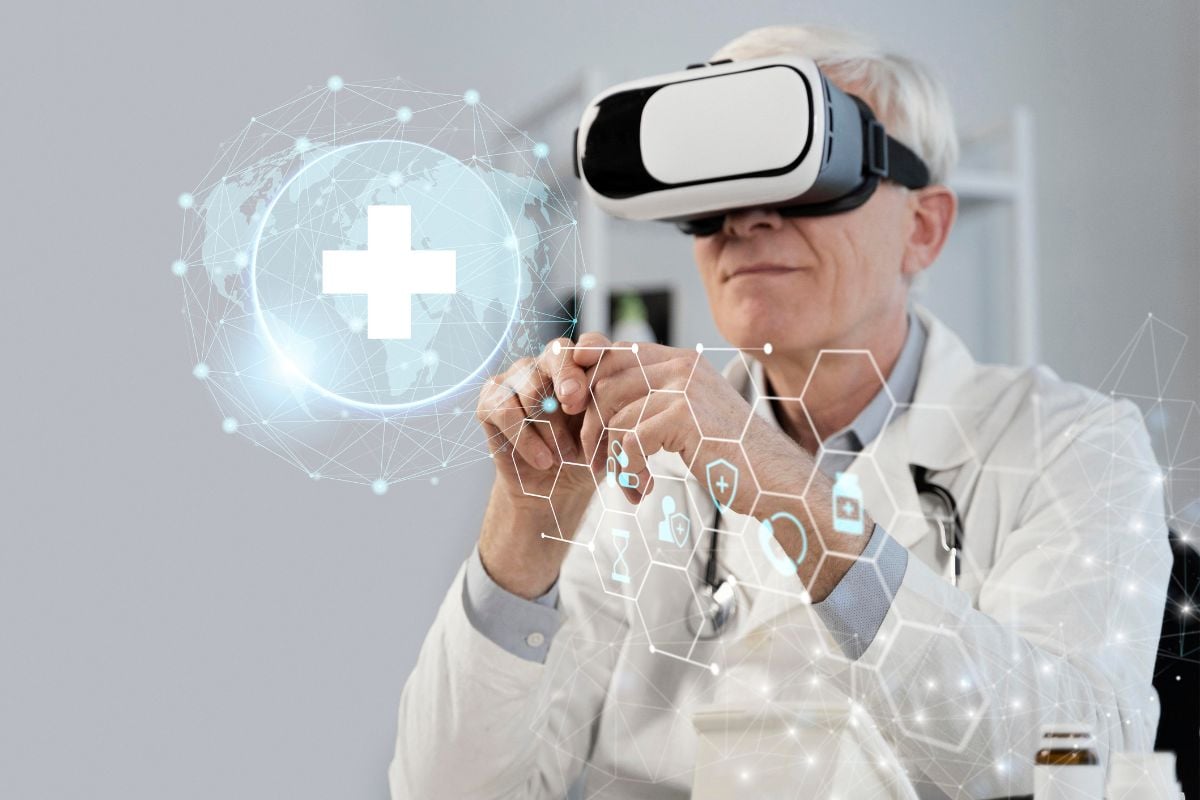Sexual Health Education: VR Technology for STI Prevention
One of the most promising applications of virtual reality is in the field of health education. Particularly, VR can be used as a tool to learn about the prevention of sexually transmitted infections (STIs).
 The innovative approach of VR to know more about sexually transmitted infections (STIs) can be a huge asset to prevent these infections as its immersive and engaging method can educate individuals in a way that was never seen before.
The innovative approach of VR to know more about sexually transmitted infections (STIs) can be a huge asset to prevent these infections as its immersive and engaging method can educate individuals in a way that was never seen before.
 Virtual Reality provides a unique, interactive platform for sexual health education that can overcome the limitations of traditional approaches. Here’s why VR is becoming a game-changer in STI prevention:
Virtual Reality provides a unique, interactive platform for sexual health education that can overcome the limitations of traditional approaches. Here’s why VR is becoming a game-changer in STI prevention:
 For VR programs to be effective in STI prevention, they should incorporate several key features:
For VR programs to be effective in STI prevention, they should incorporate several key features:
 Several pioneering initiatives are already demonstrating the potential of VR in STI prevention. For example, the University of North Carolina at Chapel Hill developed a VR game called "Social VR" that educates college students about sexual health. The game involves interactive storylines where players navigate social and sexual situations, learning about STI risks and prevention strategies along the way.
Another notable innovation is the "Virtual Reality Sexual Health Clinic" developed by researchers in Australia. This VR experience guides users through a virtual sexual health clinic, providing information on STIs, testing procedures, and treatment options. This simulation helps demystify the clinical experience and encourages individuals to seek medical advice without fear or stigma.
Several pioneering initiatives are already demonstrating the potential of VR in STI prevention. For example, the University of North Carolina at Chapel Hill developed a VR game called "Social VR" that educates college students about sexual health. The game involves interactive storylines where players navigate social and sexual situations, learning about STI risks and prevention strategies along the way.
Another notable innovation is the "Virtual Reality Sexual Health Clinic" developed by researchers in Australia. This VR experience guides users through a virtual sexual health clinic, providing information on STIs, testing procedures, and treatment options. This simulation helps demystify the clinical experience and encourages individuals to seek medical advice without fear or stigma.
 The innovative approach of VR to know more about sexually transmitted infections (STIs) can be a huge asset to prevent these infections as its immersive and engaging method can educate individuals in a way that was never seen before.
The innovative approach of VR to know more about sexually transmitted infections (STIs) can be a huge asset to prevent these infections as its immersive and engaging method can educate individuals in a way that was never seen before.
The Importance of STI Prevention
Sexually transmitted infections remain a significant public health issue in the United States and globally. According to the Centers for Disease Control and Prevention (CDC), there are approximately 20 million new STI cases each year in the U.S. alone. Education and awareness are crucial in reducing the numbers of STIs, yet traditional methods often fail to engage effectively with all demographics, particularly younger audiences who are at a higher risk.Why VR for STI Prevention?
 Virtual Reality provides a unique, interactive platform for sexual health education that can overcome the limitations of traditional approaches. Here’s why VR is becoming a game-changer in STI prevention:
Virtual Reality provides a unique, interactive platform for sexual health education that can overcome the limitations of traditional approaches. Here’s why VR is becoming a game-changer in STI prevention:
- Immersive Learning Experiences: VR allows users to enter a fully immersive environment where they can learn about STIs in a more engaging and memorable way. This can include virtual simulations of conversations with healthcare providers, interactive tutorials on proper condom use, and scenarios that illustrate the consequences of unsafe sexual practices.
- Enhanced Engagement: Interactive VR experiences are more engaging than reading pamphlets or watching videos. By actively participating in the learning process, users are more likely to retain the information and apply it in real-life situations.
- Safe and Private Learning Environment: VR provides a safe space for individuals to explore sensitive topics related to sexual health without fear of judgment or embarrassment. This privacy encourages honest self-reflection and openness to learning.
- Realistic Simulations: VR can create realistic simulations that demonstrate the effects of STIs on the body, making the risks more tangible. For instance, a VR program might show the progression of an untreated STI, emphasizing the importance of early detection and treatment.
Key Features of Effective VR Programs for STI Prevention
 For VR programs to be effective in STI prevention, they should incorporate several key features:
For VR programs to be effective in STI prevention, they should incorporate several key features:
- Evidence-Based Content: Collaborating with sexual health experts ensures that the information provided is accurate, up-to-date, and scientifically sound.
- Interactive Scenarios: Users should be able to engage in scenarios where they can make decisions and see the outcomes, such as negotiating condom use with a partner or deciding whether to get tested after a risky encounter.
- Cultural Sensitivity: Programs should be designed with cultural and demographic sensitivity to ensure they resonate with diverse audiences.
- User Feedback and Adaptation: Continuous feedback from users can help refine the VR experience, making it more effective and user-friendly over time.
Success Stories and Innovations
 Several pioneering initiatives are already demonstrating the potential of VR in STI prevention. For example, the University of North Carolina at Chapel Hill developed a VR game called "Social VR" that educates college students about sexual health. The game involves interactive storylines where players navigate social and sexual situations, learning about STI risks and prevention strategies along the way.
Another notable innovation is the "Virtual Reality Sexual Health Clinic" developed by researchers in Australia. This VR experience guides users through a virtual sexual health clinic, providing information on STIs, testing procedures, and treatment options. This simulation helps demystify the clinical experience and encourages individuals to seek medical advice without fear or stigma.
Several pioneering initiatives are already demonstrating the potential of VR in STI prevention. For example, the University of North Carolina at Chapel Hill developed a VR game called "Social VR" that educates college students about sexual health. The game involves interactive storylines where players navigate social and sexual situations, learning about STI risks and prevention strategies along the way.
Another notable innovation is the "Virtual Reality Sexual Health Clinic" developed by researchers in Australia. This VR experience guides users through a virtual sexual health clinic, providing information on STIs, testing procedures, and treatment options. This simulation helps demystify the clinical experience and encourages individuals to seek medical advice without fear or stigma.































Recent Comments